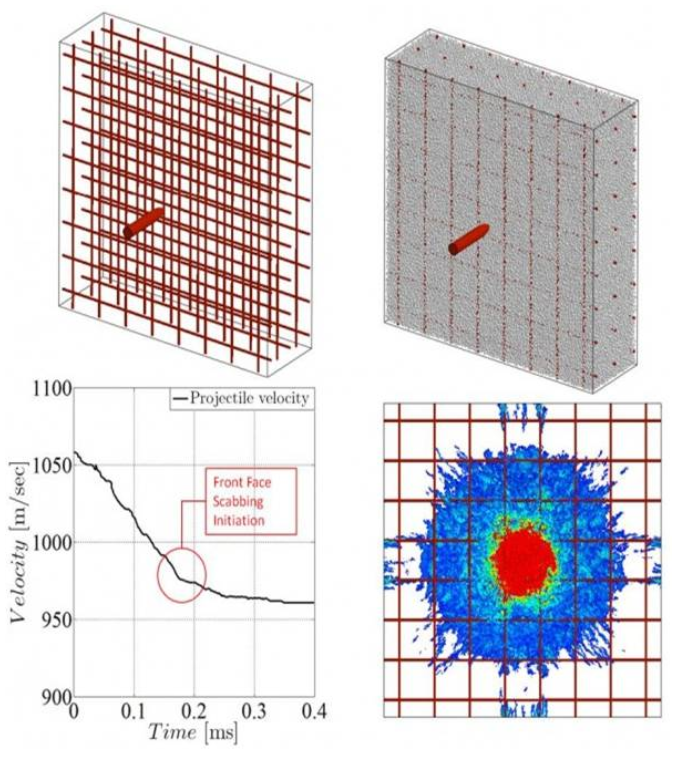Dynamic Effects
Fragmentation of weapon casings
The MARS fragmentation algorithm for solids inserts discrete cracks within a hexahedral mesh treating failure at the structural level rather than in the material constitutive equations. The initial mesh is subdivided into clusters of elements. Cracks may form between clusters when a local measure of damage exceeds a local allowable. Cracks can propagate and/or coalesce forming fragments of various shapes and sizes. The parameters of the algorithm have been calibrated for specific weapons so that generated fragment distributions match arena test data.
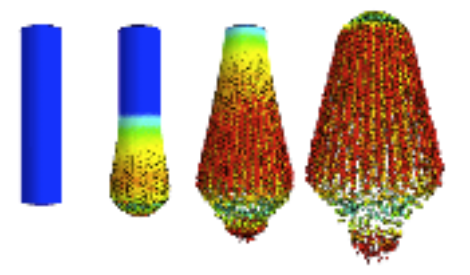
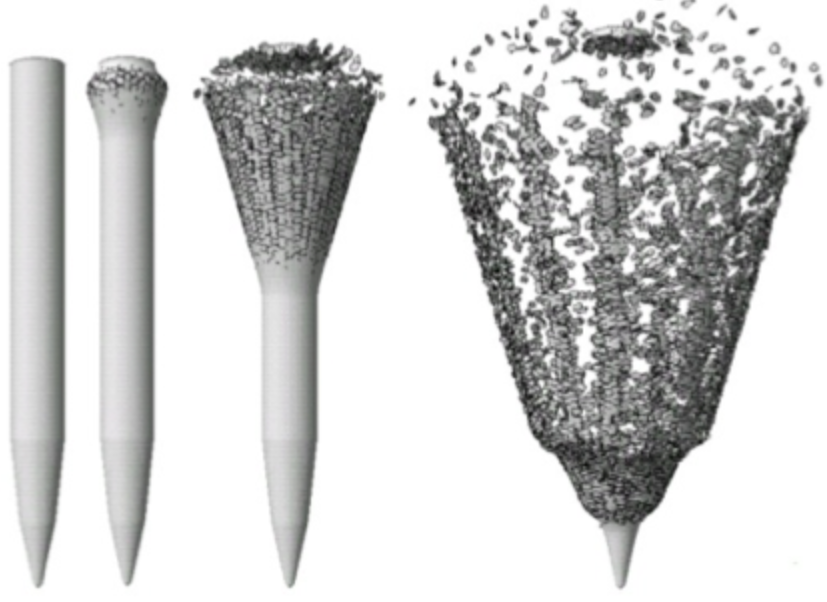
Blast induced fragmentation
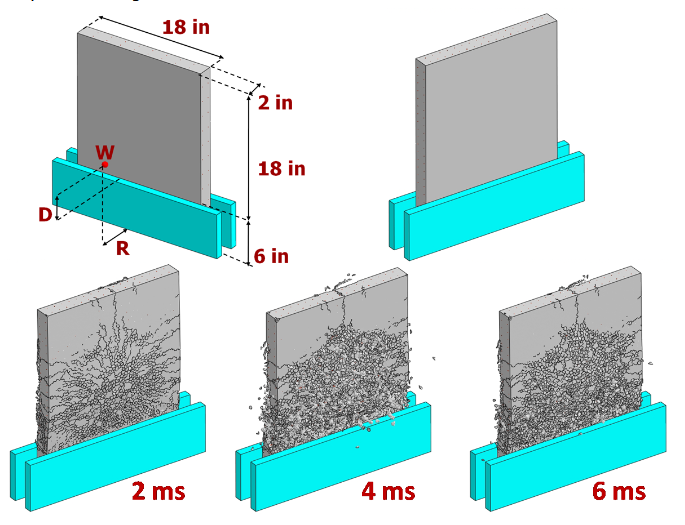
Impact induced fragmentation
This simulation consists of a metallic rod impacting a quasi-brittle brick at various velocities. The objective of this study is to demonstrate the ability of the Lattice Discrete Particle Model to simulate impact induced fragmentation. The image shows the failure patterns associated with four different velocities, ranging from 400 in/s to 1600 in/s. For the lowest velocity (top left), the brick splits essentially in two fragments. At 800 in/s (top right), there are four major fragments with some debris in between. At higher velocities (bottom left and right) the number of fragments increases up to the complete fragmentation of the brick.
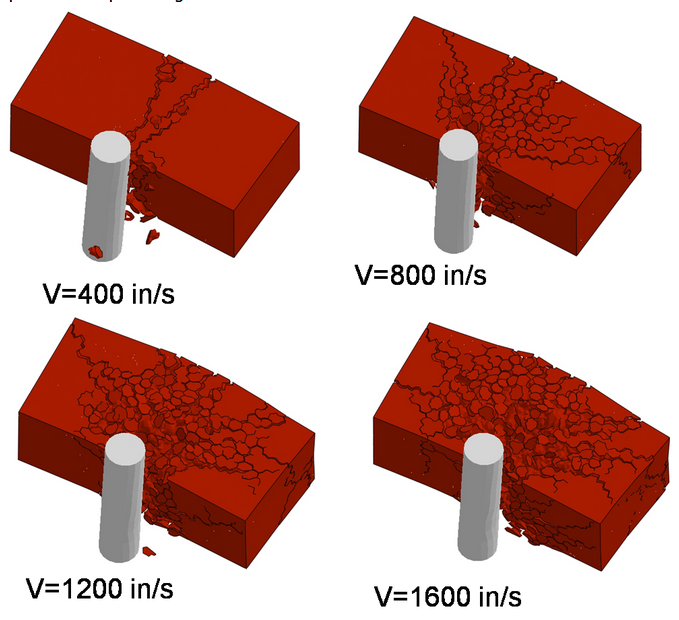
Projectile penetration
